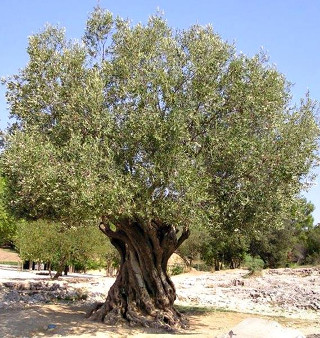
by John P. Pratt
2 Oct 2021, 1 Prime (V), Tabernacles (S), King (US), Atonement (J), 1 Remnant (P)
©2021 by John P. Pratt. All rights reserved.
|
1. The Allegory 2. The Interpretation 3. Annotated Allegory 4. Conclusion Notes |
The Book of Mormon contains a long, detailed, prophetic allegory about olive tree culture which represents a history of the House of Israel. While many articles have been written about it, very few have proposed precise interpretations of times and places, with none being consistent with a historical fulfillment.[1]
 |
The main point of the allegory is to show the great love that the Lord has for His people Israel, and in particular, how He has worked with a servant all through history to encourage them to bring forth righteous fruit. The Lord is compared to the lord of a vineyard and the House of Israel to an olive tree. The parable goes into great detail to show all the many ways in which the Lord and his servant work to get the tree to produce good fruit, so it would not need to be burned and replaced.
While the allegory clearly demonstrates the Lord's great love for His chosen people, which could have been told in a short parable, this very lengthly allegory contains many precise details which are clearly meant to be understood someday. The difference between a parable and an allegory is that while a parable is a short story meant to illustrate a point, an allegory has a one-to-one correspondence between each element of the story and the interpretation thereof. For example, in this case, the lord of the vineyard represents the Lord, and the tame olive tree represents the House of Israel (Jacob 5:3).
Here is a brief summary of the allegory, which ignores the more complicated elements. It does, however, contain the key parts interpreted by the Savior to the Nephites.
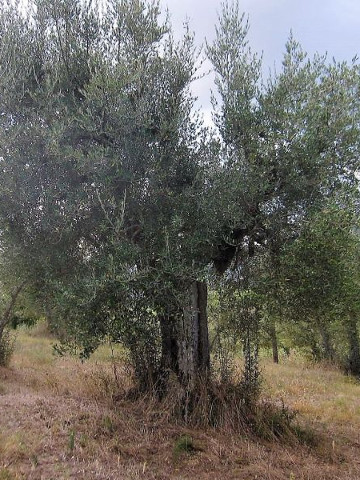 |
Second Visit. After a long time, both the lord and his servant "go down" into the vineyard again to check on progress. The servant is surprised that the lord even tried to plant branches in the poor soil of the lowest part of the garden, noting that the place of the first branch was bad indeed. The lord responded that he knew what he was doing, and that the second place was even worse than the first. To the servant's surprise, all three branches were doing well! Then they went to the choice part of the garden, and it turned out that the tree had two main branches. One did well but the other produced only wild fruit. The lord wanted to cut off and burn the bad section, but the servant asked him to give it more time, which was allowed (Jacob 5:15-28).
Third Visit. The lord and the servant saw that in the case of the tree planted in the choice part of the vineyard, which had had one good and one wild branch on the second visit, the good branch had all withered away, having been overcome by the wild branch. Accordingly, ground was cleared and a new tree was planted there with hopes of it producing good fruit.
This third visit has been overlooked until the coming forth of The Sealed Book. It is summarized in only two verses:
And thou beheldest that I also cut down that which cumbered this spot of ground, that I might plant this tree in the stead thereof [referring to the former tree, the good branch of which had withered]. And thou beheldest that a part thereof [of the former tree] brought forth good fruit, and a part thereof brought forth wild fruit; and because I plucked not the branches thereof and cast them into the fire, behold, they have overcome the good branch that it hath withered away. — Jacob 5:44-45.
 |
Fourth Visit. A long time after the second visit, both the lord and his servant again descended into the vineyard to check on the trees. This time it was a disaster: all of the trees now produced only bad fruit. Even the new tree which had been planted recently in the choice area, which earlier had had both a good branch and a wild branch, had suffered the same fate as the tree it replaced: the wild branch had overcome the good branch so that it had withered away and died (Jacob 5:40). The lord was ready to burn all of them! The servant noticed, however, that one problem was that the loftiness of the top branches had overcome the ability of roots to nourish them properly. The lord agreed to wait a little longer and suggested one last effort to save them all. He proposed a pruning of the loftiest branches and then a double swap: cut the better branches off the original tree to graft into the offspring trees, and graft the better branches of the offspring trees back into that tree. That process was done slowly in order not to shock the tree too much and allow the top and roots to be balanced (Jacob 5:29-43, 46-72).
Fifth Visit. Finally, the lord and the servant were pleased that this last effort was totally successful. All of the trees now produced good fruit, in part because all of the bad branches had been cast away. That fruit would be harvested all during a long season, after which the the whole vineyard would be burned (Jacob 5:73-77).
There are six tame trees which were planted in this allegory: (1) The original tree, representing the House of Israel, the descendants of Jacob, (2) the tree planted in the poor spot, (3) the tree in the worse spot, (4) the tree in another spot in the lowlands, (5) the first tree planted in the choice spot, and (6) another tree planted between visits 2 and 3, also in the choice area of vineyard, to replace the tree there which had one wild branch and one withered branch.
Traditional LDS study of this allegory involves merely trying to keep track of all of the trees, rather than proposing any detailed interpretation. Moreover, neither the last tree nor the third visit during which it was planted, have even been noticed in those studies. Click here to see an excellent illustration of the usual understanding of five trees and four visits, rather than six trees and five visits. Now let us now turn to the interpretation allegedly given by the Savior Himself, to see if it contains new light.
The following interpretation in Acts of the Three Nephites (A3N), Chapter 14, of The Sealed Book, attributed to the Savior Himself! Before reading this explanation, try to answer the following specific questions:
. . . Okay, time's up! How did you do? How many of these questions have you ever heard discussed before, let alone answered?
If you were fabricating The Sealed Book as a fraud, and if you were going make up answers to these questions as an interpretation supposedly from the sealed Plates of Mormon, would you be bold enough to claim that they were the answers from Jesus himself, knowing that your fraud would surely be exposed?
Here are the answers to these questions from The Sealed Book.
1. Wild Branches? First of all, it is clear that branches represent people, with descendants sprouting from the larger ancestor branches. The Savior explains that the branches of the wild olive trees represent the gentile nations (A3N 14:32). In particular, the wild branches which were grafted into the original tree in the first visit were from Babylon (A3N 14:16).
2. Grafting Branches? The grafting of branches from one tree to another might be thought to represent the intermarrying of Israel with the gentiles, but that was forbidden in the law of Moses. It is well known that when Jews live in various nations, they tend to marry with other Jews, but they can be assimilated well into most gentile nations. The interpretation of being grafted given by Jesus was they could "mingle" (A3N 14:20) or "mix" (A3N 14:24) with the various cultures without standing out much.
3. Fruit? In preparation for this article, some articles which were read proposed that the fruit represents either good or bad people. The branches, however, represent people. Their fruit might well be what those branches produce, that is, their works. Supporting that possible meaning is that the servant gathered some of the good fruit produced (Jacob 5:23). After all, Jesus taught that a good tree can only produce good fruit, and a bad tree, bad fruit (Mat. 7:17-18), which again sounds like works.
If this was the mindset of the reader, then the Savior's interpretation may indeed be a surprise. All through the entirety of The Sealed Book, the point is emphasized that in order to be a good person, able to do the works of God or even to produce good works, the key is to keep the good feelings of God in the heart, which will automatically lead to good works. In other words, that is what makes a good tree good, which tree can produce only good works.
Thus, it may indeed be interesting that throughout the Savior's interpretation of the allegory, He never once equates the fruit with works, but only with the good or bad feelings in the heart (A3N 14:23). One verse explicitly states that the branches are the people and the feelings are the fruit (A3N 14:40). Another states that these good feelings, when harvested, add to the glory of the Lord (A3N 14:44), and another explains that the good fruits will help His people be united in the last days (A3N 14:52).
4. Time? The setting for this entire allegory is the future for the prophet Zenos, who gave the allegory. It is in chronological order after he lived about 700 BC. Thus, the setting is not before the Assyrian captivity (about 723 BC) as some have suggested. Moreover, none of the branches are planted in Babylon as has also been suggested. Those places would not fit the lord and his servant returning throughout history to check on the progress of the trees.
The time of the first visit was during the reign of Nebuchadnezzar, King of Babylon, beginning about 605 BC (A3N 14:16). The time of the second visit was a long time later, during the meridian of time when the Savior came down to earth (A3N 14:21). The time of the third visit, when the new tree was planted to supplement the original tree in the choice area which then only produced wild fruit, was in the "last days" (A3N 14:40), in the first part of the fulness of times. The fourth visit, a long time after the second but not long after the third, is in our current era, in the last part of the fulness of times. Now all of the branches produce only bad fruit, including both branches of the tree recently planted at the beginning of the fulness of times, which for a while had one good branch and one wild branch (A3N 14:40). The time of the fifth visit is in the Millennium, when all of the trees will again produce good fruit having benefited from the final branch swapping and the destruction of the wicked.
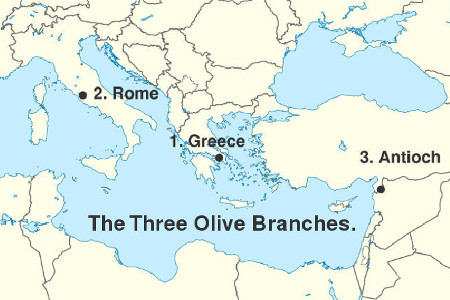 |
The location of the last (sixth) tree, which was to augment Lehi's decayed tree, was also in the Americas because it was in the same land of Lehi (apparently the whole western hemisphere).
While the location of those two branches is clearly in the Americas, and the first tree in Jerusalem, to my knowledge no one has proposed precise locations for the three branches planted in the poor soil in the lowest part of the vineyard. In The Sealed Book, the Savior tells us that the first branch (second tree) was planted in Greece,[3] a country known at that time for its worship of pagan gods. The next branch was planted in Rome,[4] a place of even more wicked practices, even until today. The third branch of the lowlands was planted in Antioch, Syria[5] (A3N 14:28-30), also outside of Israel, but not as wicked as the first two.
At the time of Christ, Paul had huge success in converting saints in many cities of Greece, such as Corinth, Athens, and Thessalonica. Moreover, one of his most important epistles is that to the Romans. Thus, these two locations, even though pagan, saw the growth of several strong branches of the Church.
As for Antioch, Syria, that was a city founded by the Greeks. It is known as the first place where followers of Jesus were called Christians. Paul and Barnabas had good success there for over a year (Acts 11:25-26).
Jesus goes on to explain that three influential men in the life of Jesus, Nicodemus, Joseph of Arimathea, and Lazarus came from those three branches, respectively (A3N 14:29-30).
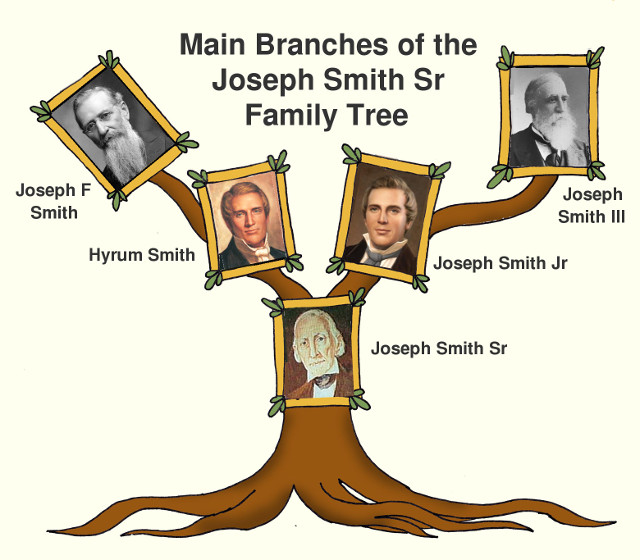 |
The Savior also explained the the last tree was associated with the Prophet Joseph Smith, the prophesied descendant of Joseph of Egypt who would raise up a righteous branch of the House of Israel in the last days. The Lord is careful to explain that even though Joseph Smith is included in the gentiles, technically, he is of the seed of Joseph of Egypt, a lineal descendant of the House of Israel (A3N 14:38). It has been proposed in previous articles that "of the seed" in a patriarchal line, means a patrilineal (all male line) descendant.[6] The actual sixth tree apparently represents the House of Joseph Smith Sr, father of the Prophet Joseph, because we are also told that the tree had two main branches, which would refer to his two sons Hyrum Smith (the patriarch), and Joseph Smith Jr (the Prophet).
Thus, the two trees in the choice area represent patrilineal descendants of the House of Israel, which matches the symbolism of them stemming from a branch of the original tree. It is therefore suggested here that the other three trees which were planted in the lowlands were also patrilineal descendants of Jacob (Israel).[7]
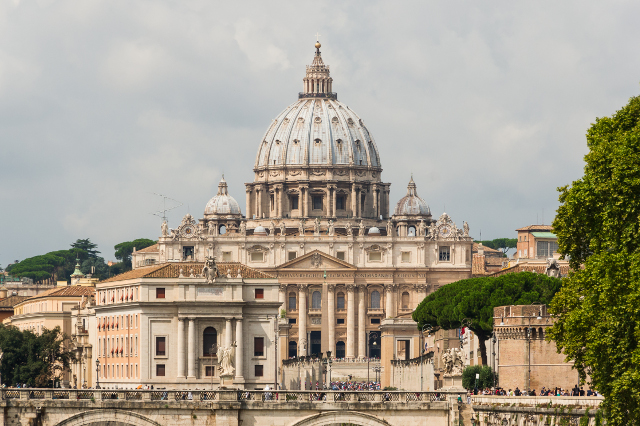 |
The modern religions of each tree are (1) the religion of Israel is Judaism. The religions of the three threes in the lowlands are (2) the Greek Orthodox Church, (3) The Roman Catholic Church, (4) The Syriac Orthodox Church.[8] The religions of the two trees in the choice land are: (5) the remnant tree of Lehi was no longer a tree to be examined, having been replaced by (6) the tree of Joseph Smith, which now has two main branches, the LDS Church and the Community of Christ Church, with both having gone bad. At the fifth visit, all of the trees produced evil fruit, perhaps because their religions were off track.
8. The Servant? Who was the servant? The allegory does not talk about multiple servants, although at the very end, the servant does call other servants to assist him. The story line is about a lord of a vineyard and one servant who "go down" multiple times to work on the olive trees in various locations in the vineyard.
No other interpretations are known to me where this servant is identified. It is usually supposed to have been various prophets who have lived at different times. That is a conundrum worth contemplating.
In any case, the Savior names the servant with whom He worked at the time of the first visit. He explicitly refers to "Daniel, the Servant of the Lord" (A3N 14:17) as being the prophet indicated.
The servant in the second visit at the time of Christ is not identified by the Savior. If it was a mortal man, then the most likely is James the Just, the brother of Christ, who was the head of the Church. He is often thought of as the first Presiding Bishop, but he was clearly more than that because it was James who gave the official decision to resolve the dispute between apostles about circumcision (Acts 15:13). The organization of the Church of Christ is that the job of apostles is to go into all the world and preach (Mat. 28:19), opening new branches, but the job of the president is to preside at church headquarters, at that time in Jerusalem.
The servant in the third visit is clearly the Prophet Joseph Smith, by whom a new tree was planted, that is, a new branch of Israel. Gentiles who joined his church were adopted into that branch of the House of Israel, being part of the larger branch of the House of Ephraim. When temple ceremonies were introduced, members were sealed to Joseph Smith, rather than to their own ancestors. That process was called "adoption", but was immediately lost to the Church at the martyrdom because his successors did not understand that Joseph Smith had actually started a new official branch of Israel!
 |
The complicated solution to change this situation from all bad fruit to all good fruit is to first prune off the most lofty bad branches, and to then swap good branches, going from the original tree to the new trees and also vice versa. That process slowly transitions all of the remaining trees from bad to good fruit!
The servant in the fifth visit is likely the One Mighty and Strong, a descendant of Joseph Smith, who will yet come in power (D&C 85:7) to convert the majority of the LDS Church to the Reborn LDS Church, currently headed by President Berger. This will complete the grafting from that wild branch back into the true tree. Note that the Reborn LDS Church is actually the same tree as the tree of Joseph Smith, having been reborn by removing from authority the most lofty branches of the LDS Church (leaders), replacing them with new ones grafted in. During the coming years, the other tribes of Israel will also be gathered in. After the trees are all repaired, and the wicked are all destroyed, then there will only be good fruit produced in the vineyard during the Millennium.
Here is my attempt to add explanatory annotations in parentheses to my above summary of the allegory. It includes both the interpretation of the Savior, as well my tentative identification of the servant as explained above, indicated by question marks.
 |
Second Visit. After a long time (600 years), both the lord (Jesus) and his servant (James the Just?) "go down" (left for the reader to discover) into the vineyard again to check on progress. The servant is surprised that the lord even tried to plant branches in the poor soil of the lowest (most evil) part of the garden, noting that the place of the first branch (Greece) was bad (pagan) indeed. The lord responded that he knew what he was doing, and that the second place (Rome) was even worse (more wicked) than the first. To the servant's surprise, all three branches were doing well (as early Christians)! Then they went to the choice part of the garden (Americas), and it turned out that the tree had two main branches (Nephites and Lamanites). One did well (Nephites) but the other (Lamanites) produced only wild (evil) fruit. The lord wanted to cut off and burn the bad section, but the servant asked him to give it more time, which was allowed.
Third Visit. The lord and the servant (Joseph Smith) saw that in the case of the (Lehi) tree planted in the choice part of the vineyard (Americas), which had had one good (Nephite) and one wild (Lamanite) branch on the second visit, the good branch had all withered away, having been overcome by the wild branch. Accordingly, ground was cleared (Lamanites in eastern United States, being part of the remaining branch of the Lehi tree, were killed), and a new tree (Joseph Smith Sr, a shoot from the Israel tree, from Ephraim) was planted there with hopes of it producing good fruit.
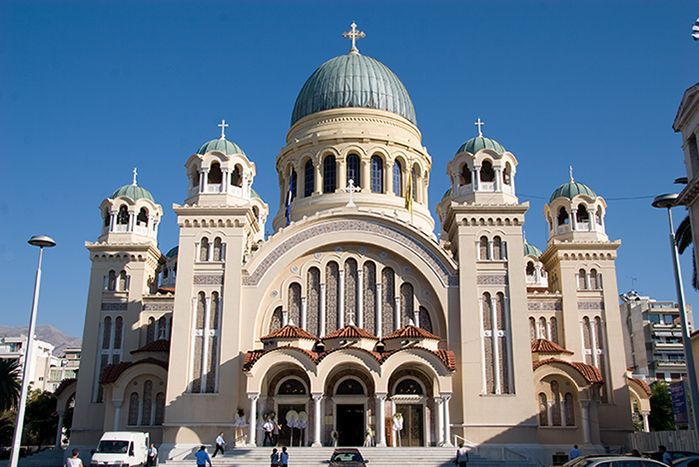 |
Fifth Visit. Finally, the lord and the servant (One Mighty and Strong?) were pleased that this last effort was totally successful. All of the trees now produced good fruit! That fruit would be harvested all during a long season, after which the the whole vineyard would be burned.
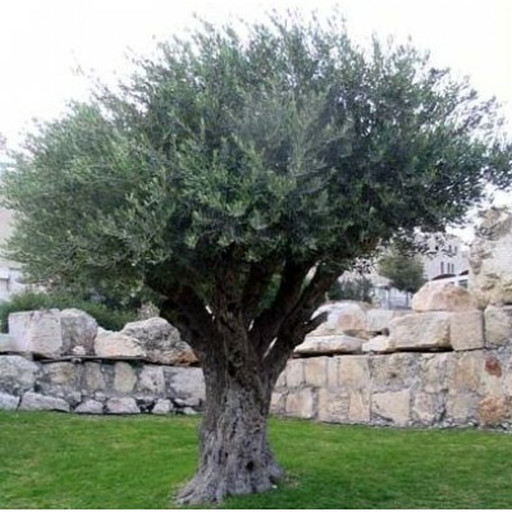 |
The allegory talks about five visits by the lord of the vineyard with his servant. They are at the time of (1) Daniel, (2) Jesus Christ, (3) Joseph Smith, (4) Mauricio Berger, and (5) in the Millennium, when all the trees finally produce good fruit.
The major difference between the Savior's interpretation and the LDS understanding of the allegory itself, is that the Lord explains that a new tree to replace Lehi's tree was planted in the days of Joseph Smith. It is stated that it was planted in the last days, and that it split into two main branches, one good and one bad, but then both of its branches went bad by the time of the fourth visit (now). Thus, it is now when all of the trees produce bad fruit. And it is now that the complicated swapping of branches begins in a final attempt to save all of the trees.
A little reflection shows that the third visit is indeed necessary to understand the allegory. It explains why the servant gave a surprising answer as to why the bad branch of the tree in the choice area had overcome the good branch. If that visit had been in the days of Joseph Smith, when it was the Lehi tree, he would have said that the bad branch (Lamanites) had destroyed the good branch (Nephites)! That was indeed what was observed on the third visit, so a new tree was planted! On the other hand, the reason actually given in the allegory, that the lofty branches had overcome the roots on all of the trees, fits perfectly in the fourth visit in our day, because the lofty LDS Church leadership has overpowered its roots, and the Reorganized Church also, until it withered into the Community of Christ, those being the religions of two main branches of the new tree.
The Savior also identifies where the three branches were planted in the lowest part of the vineyard as being in Greece, Rome, and Antioch. That fits well with them all being major branches stemming from early Christianity: The Greek Orthodox, Catholic, and Syriac Orthodox Churches, which could be monitored throughout history.
The Lord names the servant in the first visit as having been Daniel. One possibly puzzling aspect is that the allegory itself makes it clear the lord is dealing with only one principal servant, even though the timeline spans millennia.
This explanation also fits the complicated branch swapping, which is beginning now, because very little swapping has already occurred. For example, the gospel has not yet been accepted by most of the Jews and Lamanites, even though the Book of Mormon targets them. That is also part of the coming swapping effort.
Thus, it is concluded that this interpretation is indeed correct, because it is the only self-consistent explanation offered to date and it explains what have been many mysterious details. And all of this interpretation came from just one chapter in The Sealed Book! This newly revealed scripture truly sheds a bright light on this detailed allegory of the great love, patience, and works of the Lord!